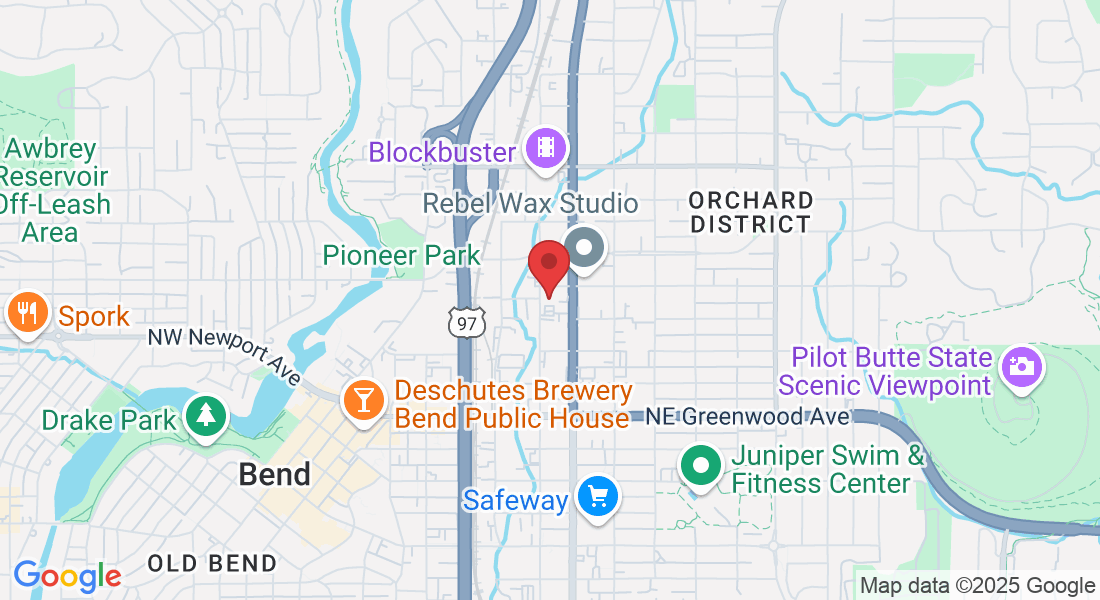Knee Pain Relief
Your Pathway to Knee Pain Relief
In the journey of life, knee pain can often emerge as an unwelcome companion, causing discomfort to people of various ages. From young athletes to active seniors, knee pain is a widespread issue that doesn't discriminate. It may be born out of a sudden injury, like a torn ligament or ruptured cartilage, or it could be the byproduct of a medical condition such as arthritis, gout, or even an infection.
Thankfully, minor knee pain often responds positively to strategies such as physical therapy, using knee braces, maintaining a healthy lifestyle, and can often provide significant relief. Here at PhysioFit, we understand that your journey to pain-free living is unique. We're here to provide customized, evidence-based treatments with a fitness-based approach to alleviate your knee pain effectively, helping you return to your everyday activities.
What You Should Know
Aging, injury, or recurring stress on the knee are the leading causes of knee pain.
Prevalent knee issues encompass sprains or strains in ligaments, cartilage tears, tendonitis, and arthritis.
A proper diagnosis of a knee problem involves a thorough evaluation from a professional or a medical examination, supplemented by diagnostic procedures such as MRIs, CT scans, X-rays, or arthroscopy.
Depending on the type and severity of the condition, both non-operative and surgical treatments are available to alleviate knee pain and problems.
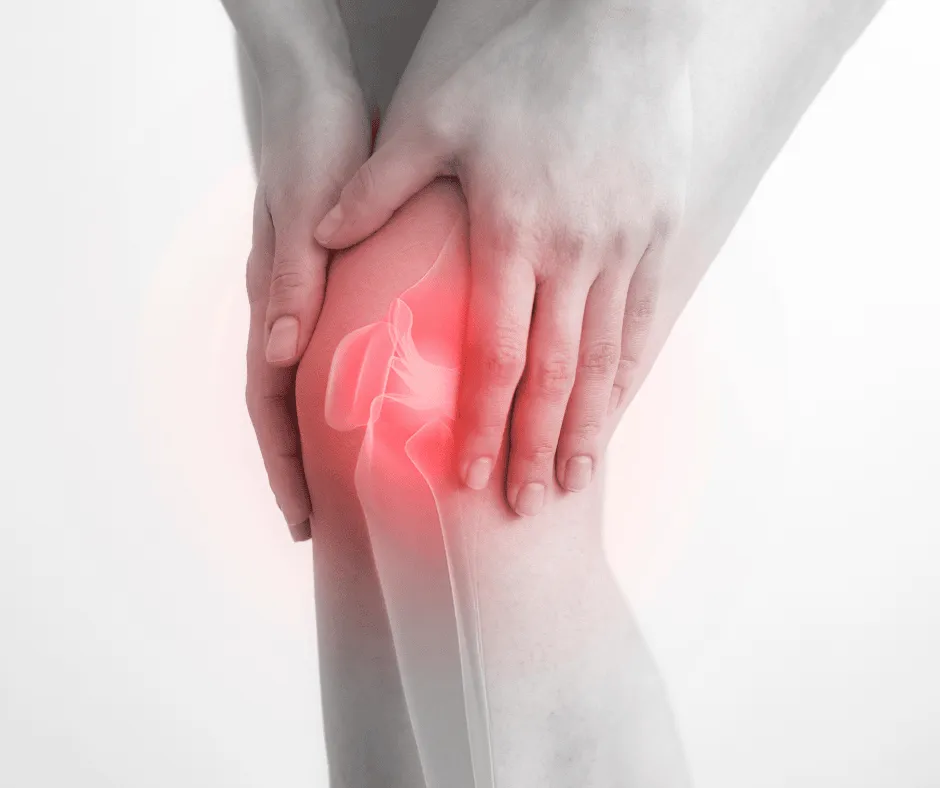
4 of the Most Common Knee Problems
The knee, a complex and integral joint in the human body, can be prone to several issues. These complications often result from natural aging, consistent stress on the knee joint, or an injury. Let's discuss four of the most common knee problems:
Strained or Sprained Knee Ligaments and Muscles: Often the result of a sudden blow or twist to the knee, strains or sprains affect the ligaments and muscles in your knee. The typical symptoms include pain, swelling, and difficulty in walking.
Torn Cartilage: Our knees consist of menisci, which are pads of connective tissue acting as shock absorbers while providing stability. These can tear due to knee trauma, often coinciding with sprains. The usual treatment ranges from wearing a supportive brace to undergoing surgery, depending on the severity of the tear.
Tendonitis: This refers to the inflammation of tendons from overuse during activities like running, jumping, or cycling. An example is patellar tendonitis, also known as "jumper's knee." It's common among sports enthusiasts who partake in high-impact activities like basketball, where the repeated force of landing can strain the tendon.
Arthritis: Osteoarthritis, the most common type affecting the knee, is a degenerative condition where the joint cartilage wears away gradually, often affecting middle-aged and older individuals. Excessive stress on the joint, due to repeated injury or being overweight, can cause it. Another form, Rheumatoid arthritis, can cause inflammation and destruction of the knee cartilage, often affecting individuals at a younger age than osteoarthritis does.
Remember, if you resonate with any of the symptoms or conditions mentioned, we highly recommend making an appointment with us for a thorough evaluation and personalized treatment plan.
Preventing Knee Pain
While it might be impossible to completely avoid knee pain, these strategies can aid in averting injuries and slowing down joint wear:
Maintain a Balanced Weight: Keeping your weight in check is one of the most beneficial actions for your knees. Each extra pound exerts additional stress on your joints, heightening the likelihood of injuries and osteoarthritis.
Condition Yourself for Sports: To equip your muscles for the rigors of sports activities, incorporate conditioning exercises into your routine.
Aim for Perfection in Practice: Strive to perfect your technique and movement patterns for any sport or physical activity. Professional coaching can be valuable in this aspect.
Strengthen and Flex: Weak muscles often precipitate knee injuries. Strengthening your quadriceps and hamstrings, which are front and back muscles of your thighs, will help bolster your knee support. Engage in balance and stability training for more effective muscle coordination around your knees.
Remember, tight muscles can also lead to injuries, so flexibility exercises should be a regular part of your workout regime.
Exercise Wisely: If you're dealing with osteoarthritis, chronic knee pain, or frequent injuries, you may need to reconsider your exercise methods. Contemplate shifting to swimming, water aerobics, or other low-impact activities. At times, simply limiting high-impact activities can result in substantial relief.
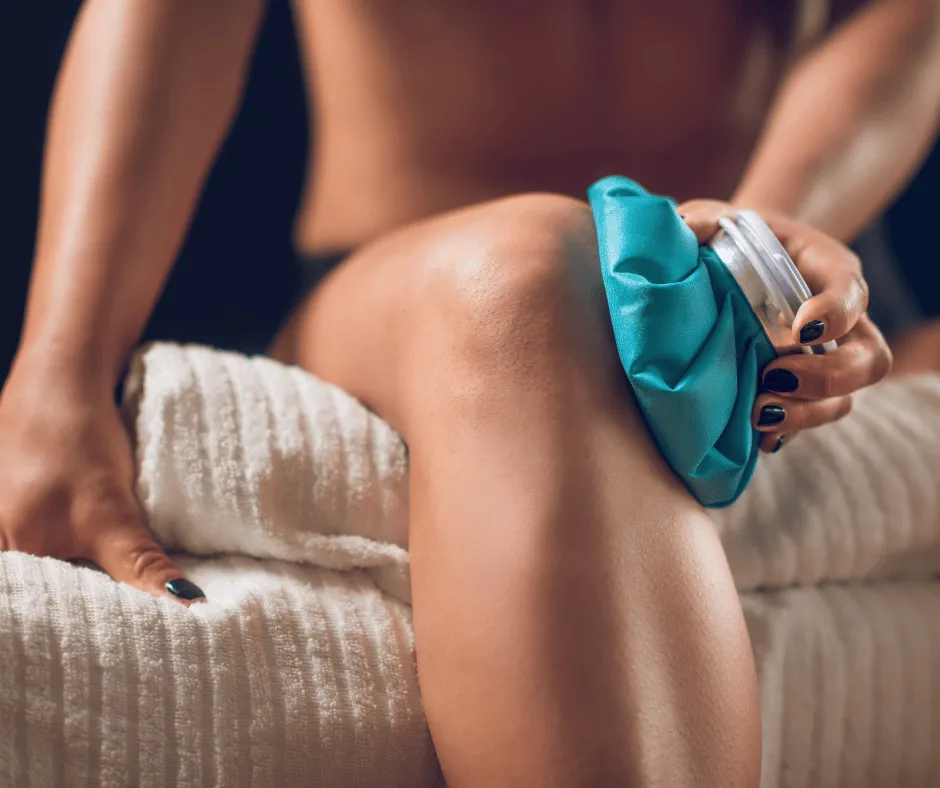
Common Symptoms of Knee Pain
Inflammation and rigidity
A reddish hue and a warm feeling when touched
Sounds of popping or crunching
A sense of weakness or lack of stability
Difficulty in fully extending the knee
Remember, if you resonate with any of the symptoms or conditions mentioned, we highly recommend making an appointment with us for a thorough evaluation and personalized treatment plan.
Please Note: The information provided on our website is intended for general education and is not a substitute for professional medical advice. Each individual's situation and body is different. Therefore, what may work for one person may not work for another. We care about your well-being and advise you to reach out to us to discuss your specific needs before implementing any advice from our website.
Your Source for All Things Physical Therapy in Bend Oregon
The PhysioBlog
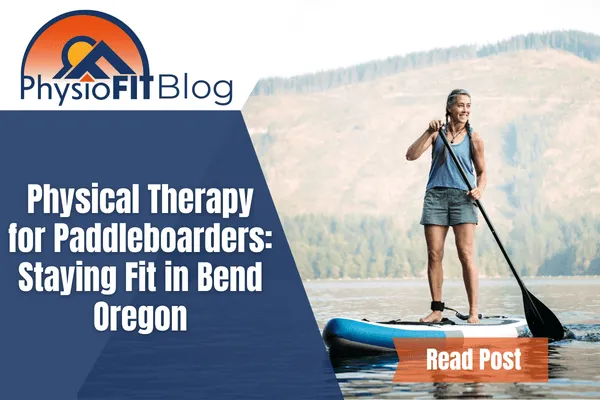
Physical Therapy for Paddleboarders: Staying Fit in Bend Oregon
Understanding Paddle Boarding and Physical Therapy
Please Note:The information provided on our website is intended for general education and is not a substitute for professional medical advice. Each individual's situation and body are different. Therefore, what may work for one person may not work for another. We care about your well-being and advise you to reach out to us to discuss your specific needs before implementing any advice from our website.
Introduction
Paddle boarding on the Deschutes River is a popular pastime for many outdoor enthusiasts. This activity not only offers an opportunity to enjoy the scenic beauty of the river but also provides a full-body workout. However, to fully enjoy this sport, it's crucial to stay fit and maintain good physical health. This is where physical therapy comes into play. Physical therapy plays a vital role in maintaining and improving fitness levels, making it an essential part of a paddle boarder's routine.
Paddleboarding is a sport that requires strength, balance, and endurance. It engages the entire body, from the core muscles used for balance to the arm and shoulder muscles used for paddling. As such, staying fit is crucial for paddleboarders. Regular exercise, proper nutrition, and adequate rest are all important aspects of fitness. However, one aspect that is often overlooked is the role of physical therapy.
Physical therapy, also known as physiotherapy, is a healthcare profession dedicated to improving and maintaining physical function and performance. It involves the use of various techniques, including exercises, manual therapy, and education, to treat and prevent injuries and improve physical abilities. For paddleboarders, physical therapy can help improve strength, flexibility, and balance, reduce the risk of injuries, and enhance performance.
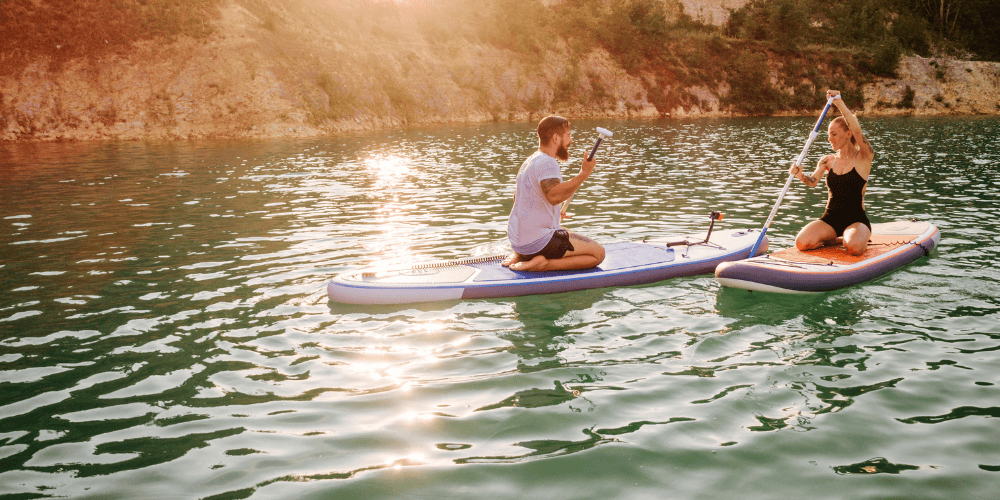
The Sport of Paddleboarding
Paddleboarding has a rich history and has gained significant popularity over the years. It's a versatile sport that can be enjoyed in various water bodies, from calm lakes to flowing rivers like the Deschutes. The health benefits of paddleboarding are numerous. It improves balance, strengthens the core, and provides a low-impact cardio workout. However, like any sport, paddleboarding comes with its share of physical challenges and potential injuries. Common issues include strains, sprains, and classic overuse injuries, particularly in the shoulders due to the repetitive paddling motion.
Paddleboarding is believed to have originated in Hawaii, where it was known as Hoe he'e nalu. It has since spread across the world and has become a popular sport and recreational activity. Today, paddleboarding is enjoyed by people of all ages and fitness levels. It's a great way to enjoy the outdoors, get a full-body workout, and have fun.
One of the main reasons for the popularity of paddleboarding is the health benefits it offers. Paddleboarding is a full-body workout that engages all the major muscle groups. It strengthens the core, improves balance, increases endurance, and provides a low-impact cardio workout. Moreover, being out on the water and in nature can also have positive effects on mental health, reducing stress and improving mood.
However, paddleboarding is not without its challenges. The sport requires a good level of physical fitness and can be physically demanding. Common injuries in paddleboarding include muscle strains and sprains, particularly in the shoulders, back, and knees. These injuries often result from overuse, poor technique, or inadequate physical conditioning.
The Role of Physical Therapy in Paddleboarding
Physical therapy can play a significant role in helping paddleboarders prevent and recover from these injuries. It involves the use of various techniques to improve strength, flexibility, and balance, and to promote healing and recovery.
Preventive physical therapy focuses on strengthening the body and improving technique to prevent injuries. This might involve exercises to strengthen the core and shoulder muscles, improve balance, and enhance paddling technique. For example, a physical therapist might recommend exercises that truly strengthen the core, rotator cuff for shoulder health, and balance exercises to keep you on your board.
Reactive physical therapy, on the other hand, involves treating existing injuries. This might involve manual therapy techniques to reduce pain and inflammation,exercises to promote healing and restore function, and education on modifying activity and technique to prevent re-injury.
Physical therapy can be a valuable resource for paddleboarders. By improving physical fitness and technique, and by treating and preventing injuries, physical therapy can help paddleboarders enjoy their sport safely and effectively.
Overuse Injuries in Paddleboarding
Overuse injuries are particularly common in paddleboarding. These injuries occur when a particular body part is subjected to repeated stress over time, leading to damage and inflammation. In paddleboarding, the shoulders are particularly at risk due to the repetitive motion of paddling.
Overuse injuries can result in pain, reduced mobility, and impaired performance. If left untreated, they can lead to more serious problems like chronic pain and disability. Therefore, it's important to address overuse injuries promptly and effectively.
Physical therapy can play a key role in the management of overuse injuries in paddleboarding. A physical therapist can provide treatments to reduce pain and inflammation, prescribe exercises to strengthen the affected area and restore function, and provide advice on modifying activity and technique to prevent re-injury.
For example, in the case of a shoulder overuse injury, a physical therapist might use manual therapy techniques like massage and mobilization to reduce pain and inflammation, prescribe exercises to strengthen the shoulder muscles and restore mobility, and provide advice on proper paddling technique to reduce stress on the shoulder.
For more detailed information on training for paddleboarding, you can refer to thiscomprehensive guide by REI Co-op. For a real-life experience of paddleboarding on the Deschutes River, check out thisarticle by Oregon Live.
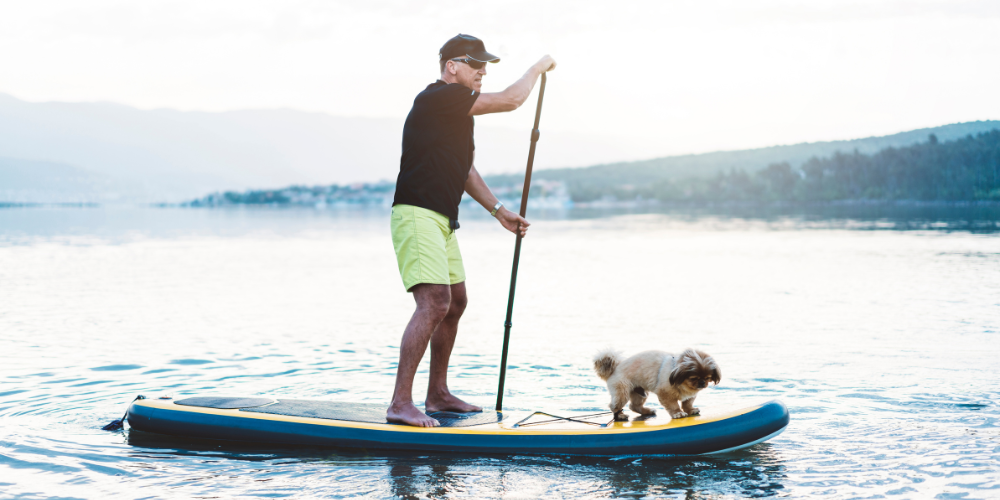
Physical Therapy Techniques for Paddleboarders
Physical therapy offers a range of techniques and exercises specifically designed to target the common problem areas for paddleboarders. These exercises focus on strengthening the core, improving balance, and enhancing the endurance of the upper body, particularly the shoulders.
Core strengthening exercises are crucial for paddleboarders as a strong core improves balance and stability on the board. Exercises, while not a comprehensive list, could include planks, bridges, and loaded carries.
Balance exercises are also important as they help paddleboarders maintain their stability on the board. These might include training on unsteady surfaces, heel-to-toe walk, as well as board specific exercises.
Upper body and shoulder strengthening exercises are vital due to the repetitive paddling motion in paddleboarding. These exercises can help prevent overuse injuries in the shoulders.
It's important to note that these exercises should be performed under the guidance of a qualified physical therapist in bend to ensure correct technique and prevent injuries. A physical therapist can provide a customized exercise program based on the individual's fitness level, goals, and any existing injuries or conditions. If you’d like to explore this more or would like to schedule a time with a physical therapist, contact us at PhysioFITBend.com
FAQs
What are the benefits of paddleboarding? Paddleboarding is a full-body workout that improves balance, strengthens the core, and provides a low-impact cardio workout. It also offers mental health benefits by reducing stress and improving mood.
How can physical therapy help paddleboarders? Physical therapy can help paddleboarders improve strength, flexibility, and balance, reduce the risk of injuries, and enhance performance. It can also aid in the recovery from injuries. Contact us at PhysioFITBend.com for help.
What are some common injuries in paddleboarding? The most common injuries in paddleboarding are muscle strains, sprains, and overuse injuries, particularly in the shoulders due to the repetitive paddling motion.
What is the difference between preventive and reactive physical therapy? Preventive physical therapy focuses on strengthening the body and improving technique to prevent injuries, while reactive physical therapy involves treating existing injuries.
What are some physical therapy exercises for paddleboarders? Physical therapy exercises for paddleboarders include core strengthening exercises like planks and bridges, balance exercises like standing on one leg, and upper body and shoulder strengthening exercises like rotator cuff exercises and shoulder press.
Conclusion
In conclusion, physical therapy plays a crucial role in paddleboarding, particularly for those who enjoy the sport in Bend, Oregon. It not only helps in preventing common injuries but also aids in improving overall performance. Whether you're a seasoned paddleboarder or a beginner, incorporating physical therapy into your fitness regimen can significantly enhance your paddleboarding experience. So, take the plunge and consider physical therapy as an integral part of your paddleboarding journey. It's an investment in your health that will pay off in the long run. Happy paddleboarding!
Please Note: It's important to note that any exercises that are shared should be performed under the guidance of a qualified physical therapist in bend to ensure correct technique and to prevent injuries. A physical therapist can provide a customized exercise program based on the individual's fitness level, goals, and any existing injuries or conditions. If you’d like to explore this more or would like to schedule a time with a physical therapist, contact us at PhysioFITBend.com
Copyright PhysioFIT 2025 . All rights reserved


